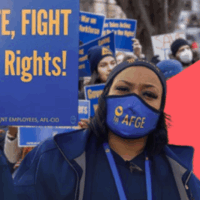This month’s jobs report released today by the Bureau of Labor Statistics, continues to tell the story of an uneven labor market recovery rife with longstanding inequities. In this context, the National Employment Law Project (NELP) is dedicated to transforming the system and paving the way for a more just economy that meets the need of those most impacted today and historically: Black workers and in particular Black women, who through racist policies, have been segregated into systemically low-paying industries, making it difficult to build up savings over time and be economically stable.
According to today’s BLS report:
- The economy added 943,000 jobs in July, and the unemployment rate dipped 0.5 percentage point to 5.4 percent.
- The jobless rates for teenagers (9.6 percent) and Asians (5.3percent) showed little change over the month.
- The unemployment rates declined in July for adult men (5.4 percent), adult women (5.0 percent), and white people (4.8 percent).
- A marginal 1 percentage point unemployment rate decline for Black and .8 percent for Latinx workers, continues to show a stark disparity. The still-too-high numbers 8.2 percent for Black workers, and 6.6 percent for Latinx workers, point to high unemployment prior to the pandemic, and the beginning of yet another an unjust economic recovery cycle unless major racial equity interventions are made.
- More Black workers were driven out of the workforce this month. This drop can be attributed to longstanding systemic racism and the absence of systemic support in integrating Black job seekers back into the labor market, which can result in Black workers being considered by BLS to be disconnected from the labor force. (1)
- Today’s job report reveals one of the largest job gains since last August, but we are still far below pre-pandemic levels with 8.7 million people still unemployed and the economy still down 5.7 million jobs.
“An uneven recovery is not a just recovery because the UI system was grafted onto the structurally racist foundation that undergirded much of the New Deal programs. Our solutions on unemployment must be structural and transformative, intentionally bringing in underpaid Black and Latinx workers, permanently and not just on a temporary basis in times of crisis,” said Rebecca Dixon, executive director of the National Employment Law Project.
Today’s job report continues to demonstrate that as NELP, workers, and our partners have pointed out, unemployment insurance programs have been a lifeline throughout this crisis in supporting people to meet basic needs while searching for work and in stimulating the nation’s economic recovery by supporting consumer spending.
As vaccine rates lag, COVID-19 variants rise, and the job market steadily improves, the looming benefit shutoff on Labor Day, September 6th, leaves an estimated 7.5 million workers without support and leaves millions of others at the mercy of an uneven patchwork of state coverage. Notably, in July, 1.6 million workers were prevented from looking for work due to the pandemic.
With the looming expiration of successful pandemic unemployment programs and as Congress approaches the reconciliation process and infrastructure bill, Congressmembers must remember that investing in workers is a vital infrastructure investment. NELP, workers, and allies are calling on Congress to enact bold, structural UI reform beginning with expanded coverage, minimum benefit duration that aligns with the needs of every worker, and increased benefit amounts that are in line with basic living expenses.
Workers need bold reform that will lay the groundwork for an equitable unemployment insurance system and labor market making it possible for all workers and communities to thrive.
###
The National Employment Law Project is a non-partisan, not-for-profit organization that conducts research and advocates on issues affecting underpaid and unemployed workers. For more about NELP, visit www.nelp.org. Follow NELP on Twitter at @NelpNews.
- According to Table A–2, the Black employment to population ratio declined by .1 percentage point to 55.8 and the labor force participation rate declined from 61.6 to 60.8.



